Drawing on memories of the Venetian stories that my grandparents told me as I grew up, this collection of sculptures collide elements of the narratives as if trying—and failing—to recreate the same arc.
- TitleWhite Powder, White Stone
- Type(s)Painting, Sculpture, Light
- AgendaHeritage
- Year(s)2017
- LocationNove, Italy
- ReferencesGiuseppe Penone, Jannis Kounellis
I produced this collection in my family’s ceramic factory in Nove, Italy—a small town between Venice and the Dolomites where my grandfather was born. Drawing on memories of the Venetian stories that my grandparents told me as I grew up, this collection of sculptures collides elements of the narratives as if trying—and failing—to recreate the same arc. The attempt to bring back my grandparents’ voices, to remember those stories exactly as they were, is as futile as turning dust back into stone.


Coming to Nove, I felt that I had emerged into Bertilla and Onorino’s stories, somehow even more fantastical for all of the land’s layered memories: the WWII bullet holes that mark the factory walls; the passion flowers that climb the walls inside my grandmother’s childhood home. The place was real all along, but now it was my time to find adventure. In a sense, this was my grandparents’ last gift to me—an end turning into a beginning.
Each work is based on stories or images of Italy that Bertilla and Onorino told me as a child.
Firefly
In Firefly, a tower-like form sits on a wooden pedestal, surrounded by small lights. As a child, my grandmother Bertilla would catch fireflies in a jar and use this improvised light to run through the fields at night. Many years later, when I first came to Nove, I visited the house that she grew up in. As the sun set, I looked into the abandoned structure and found it full of fireflies, like something out of imagination. In the sculptural installation, the chimney at the center of the lights refers to the hearth as a place for sharing warmth and stories.


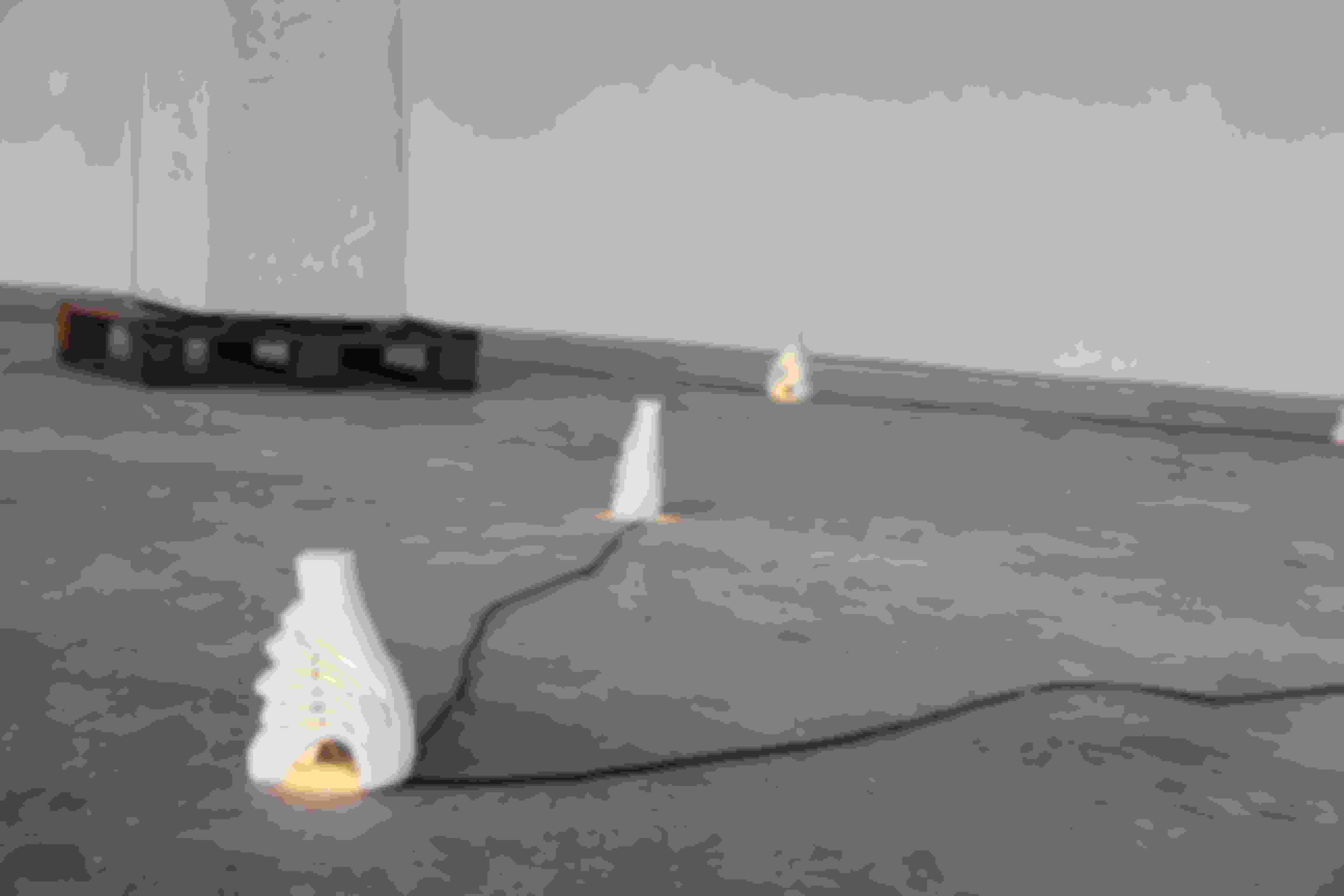
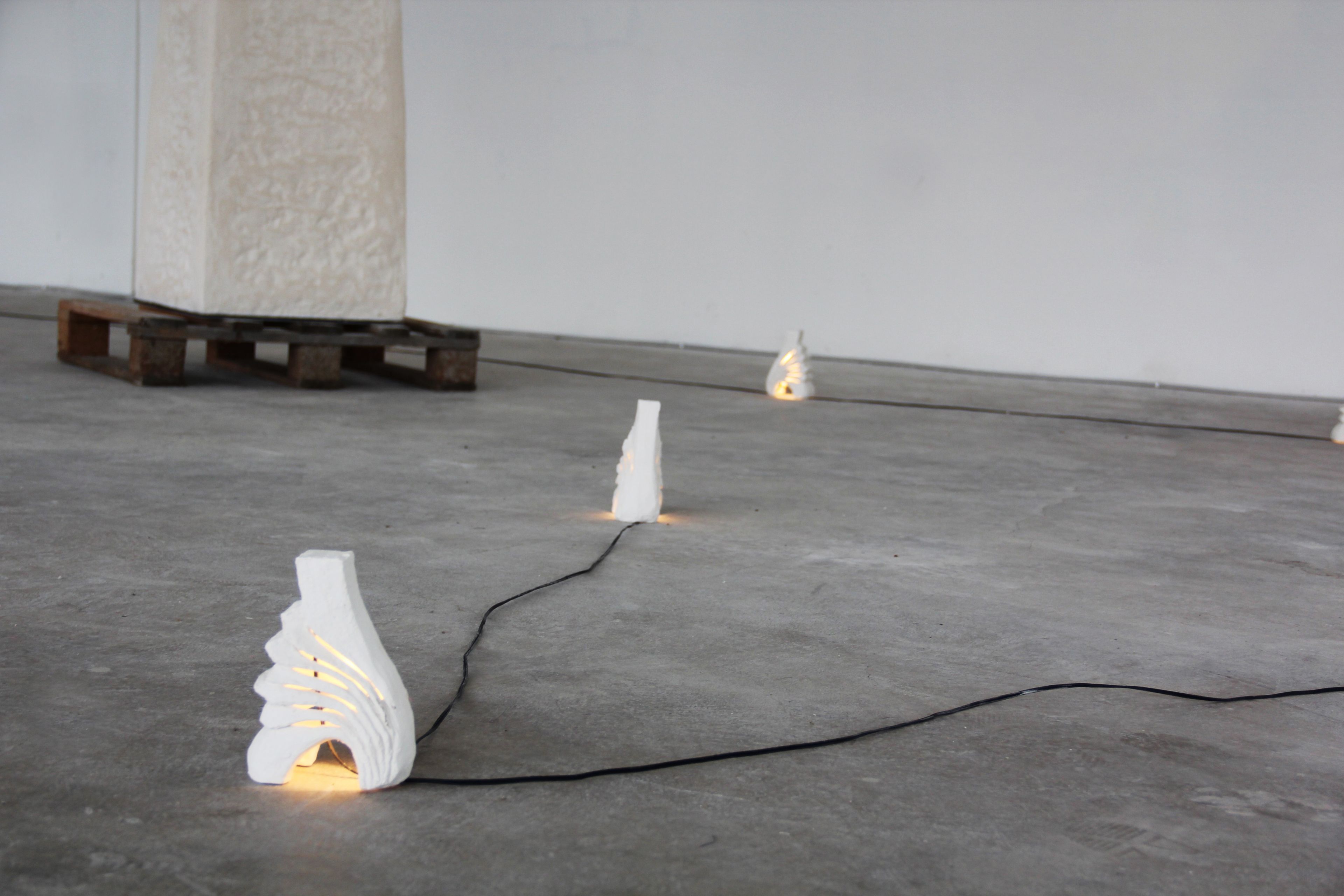
When Bertilla was young, she would help with household chores like washing the laundry in the nearby river, scrubbing and cleaning the sheets in the shallows. One day, she misjudged the current and the river tore the cloth from her hand, sweeping it swiftly downstream. I like to imagine that the sheet fled fish-like all the way to Venice and the sea. River Fish recreates this narrative, perforating a piece of fabric, painted with natural black powder mixed with rabbit skin glue, with fish-like scales and tethering it in the stream behind my uncle’s ceramics factory in Nove.




Curtain sketches the contours of a window frame in thin metal rods and cloth. Before they married, Onorino would bicycle an hour to visit Bertilla in Breganze. When they said goodbye again, Bertilla would run up to her bedroom window—which faced the direction of Onorino’s hometown, Nove—and would wave her handkerchief as he rode off. Every so often, he would look over his shoulder to see her still waving. This piece reconstructs this image with fabric from Bonotto, a fabric factory founded in 1912 and based in Breganze.















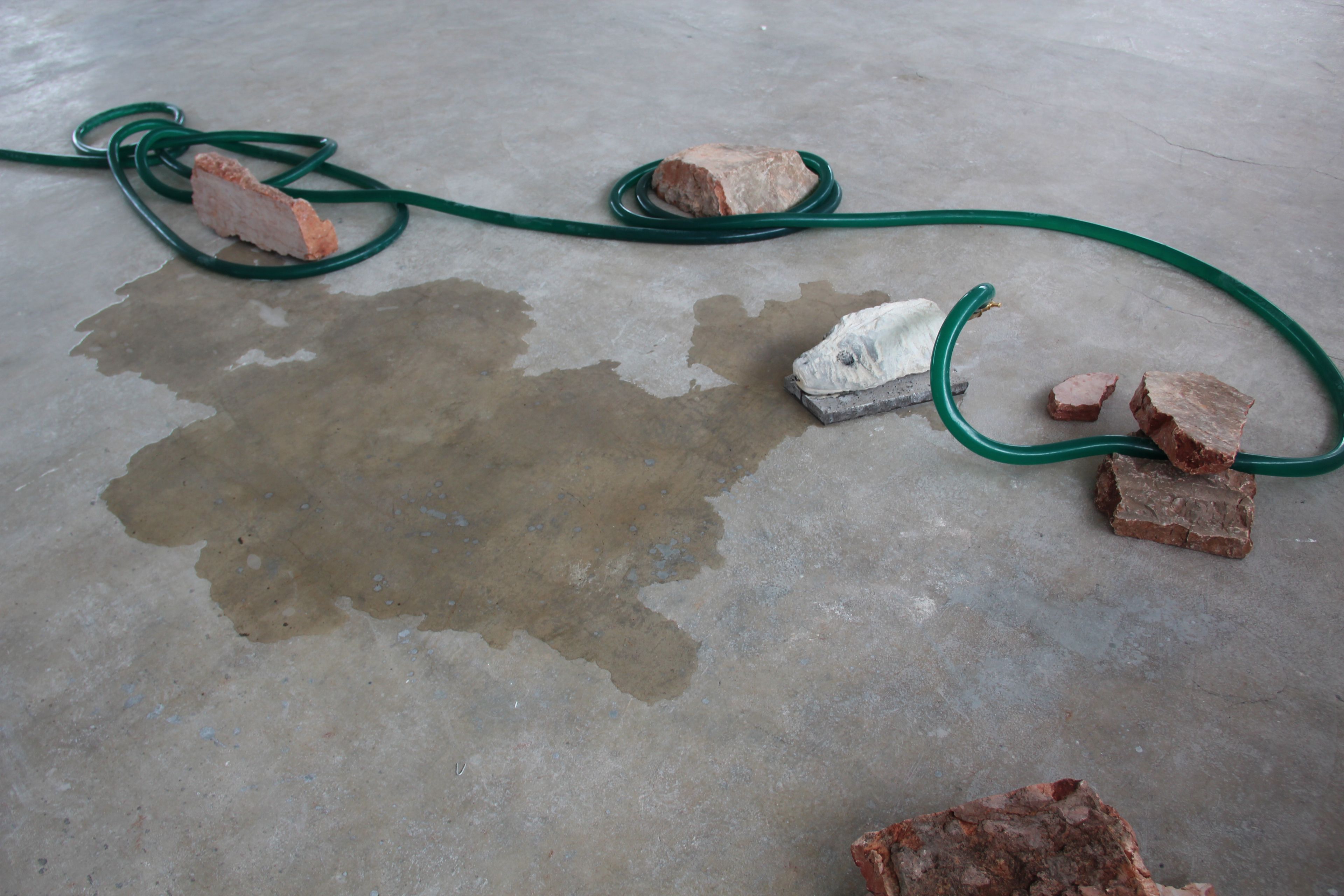



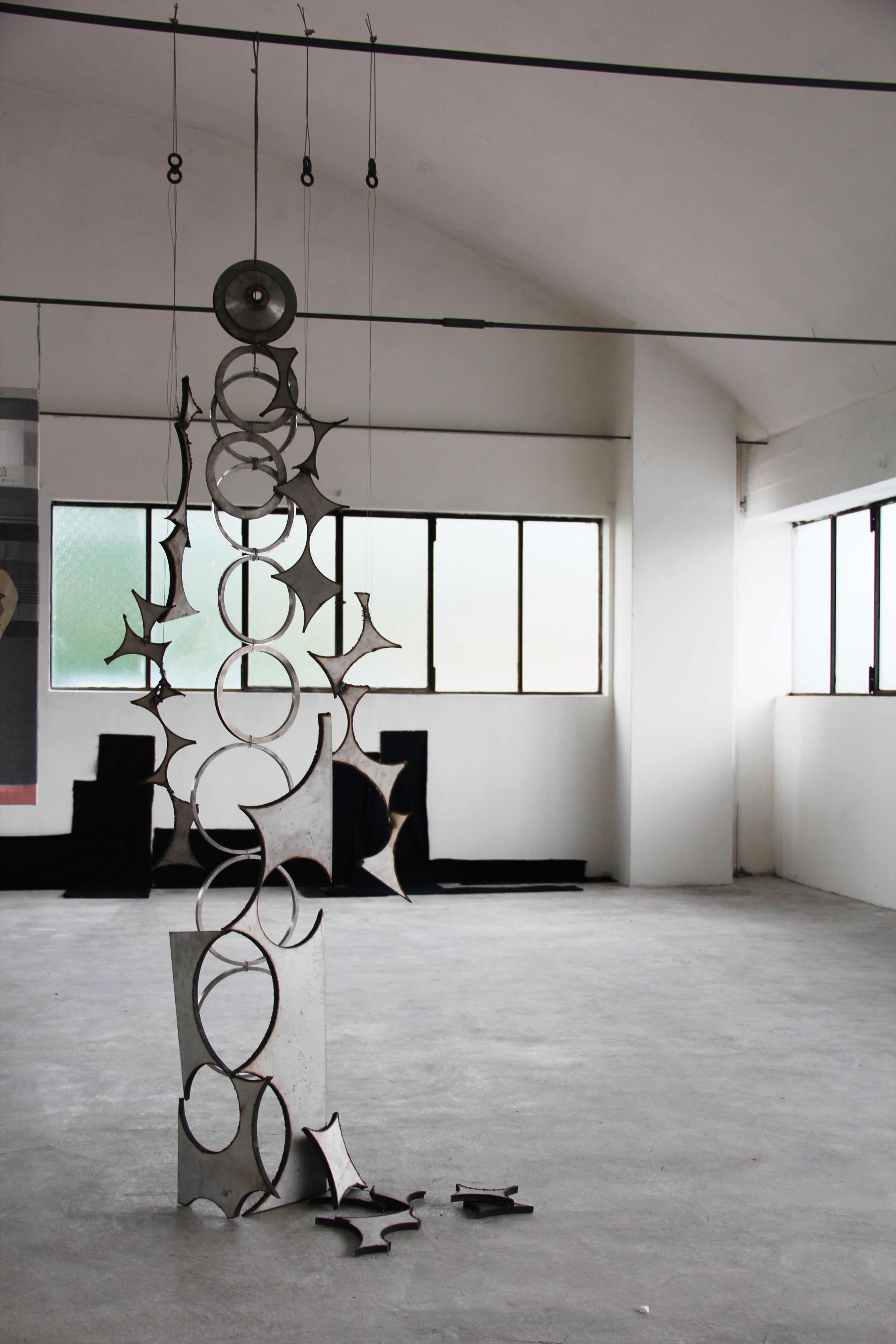
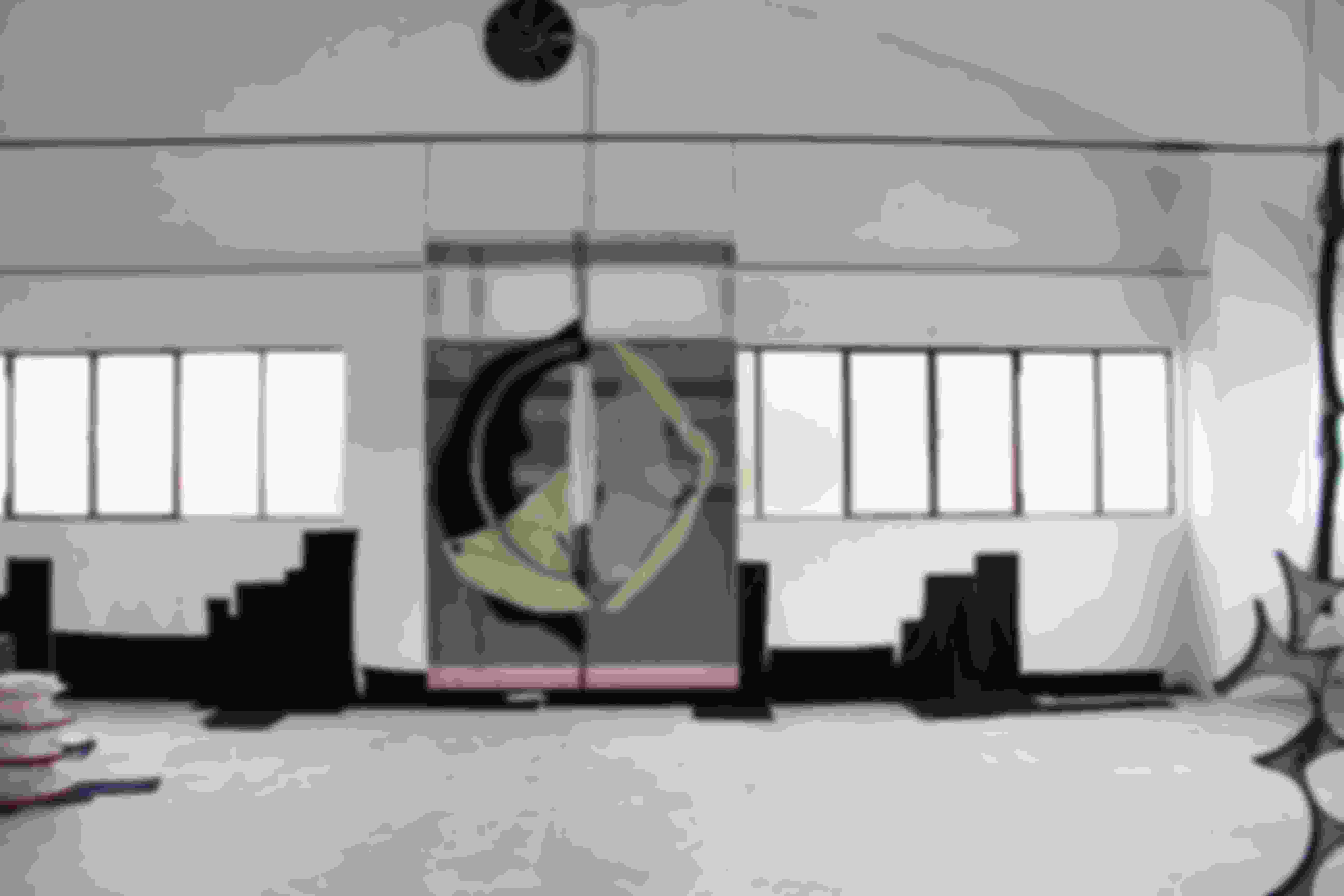
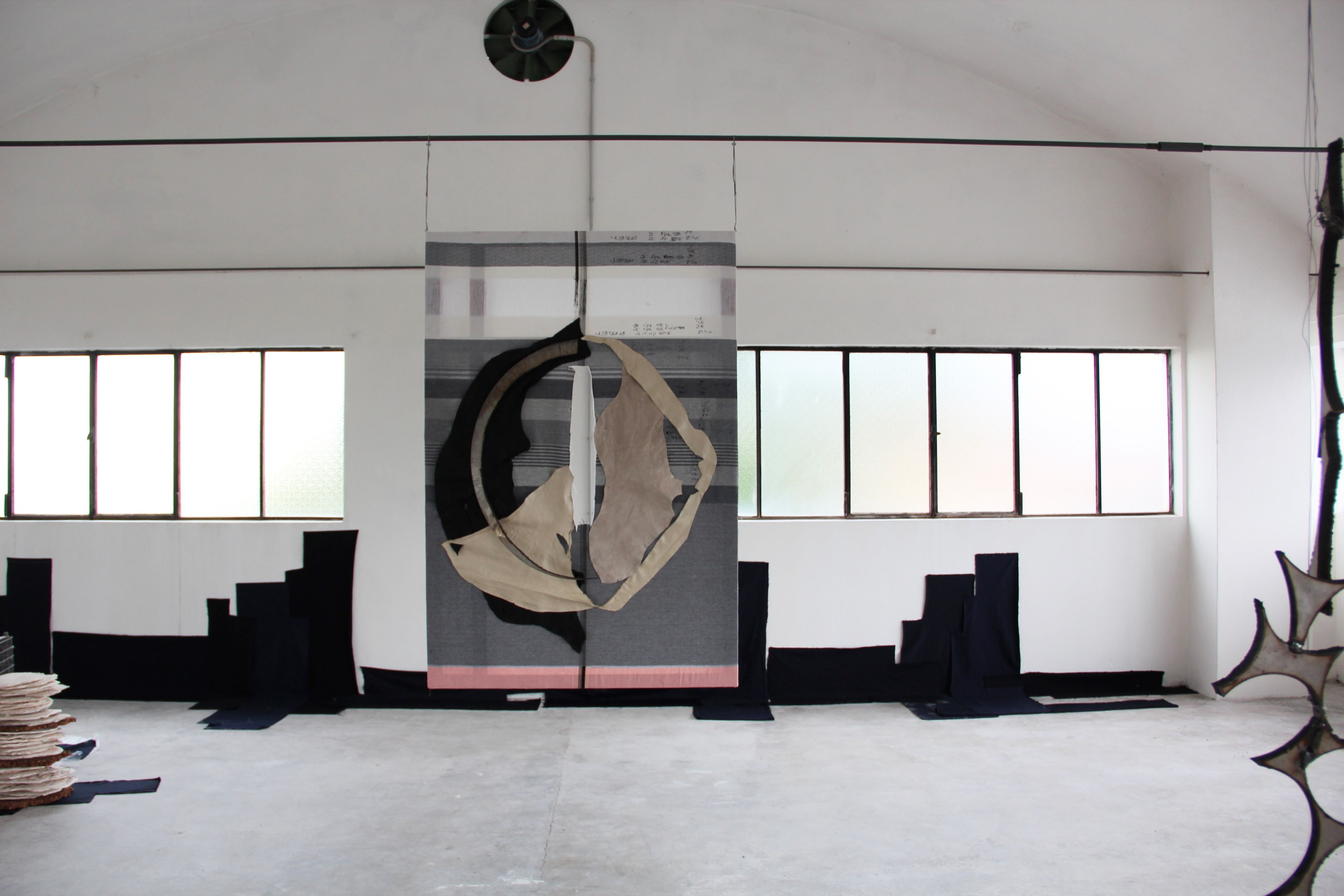
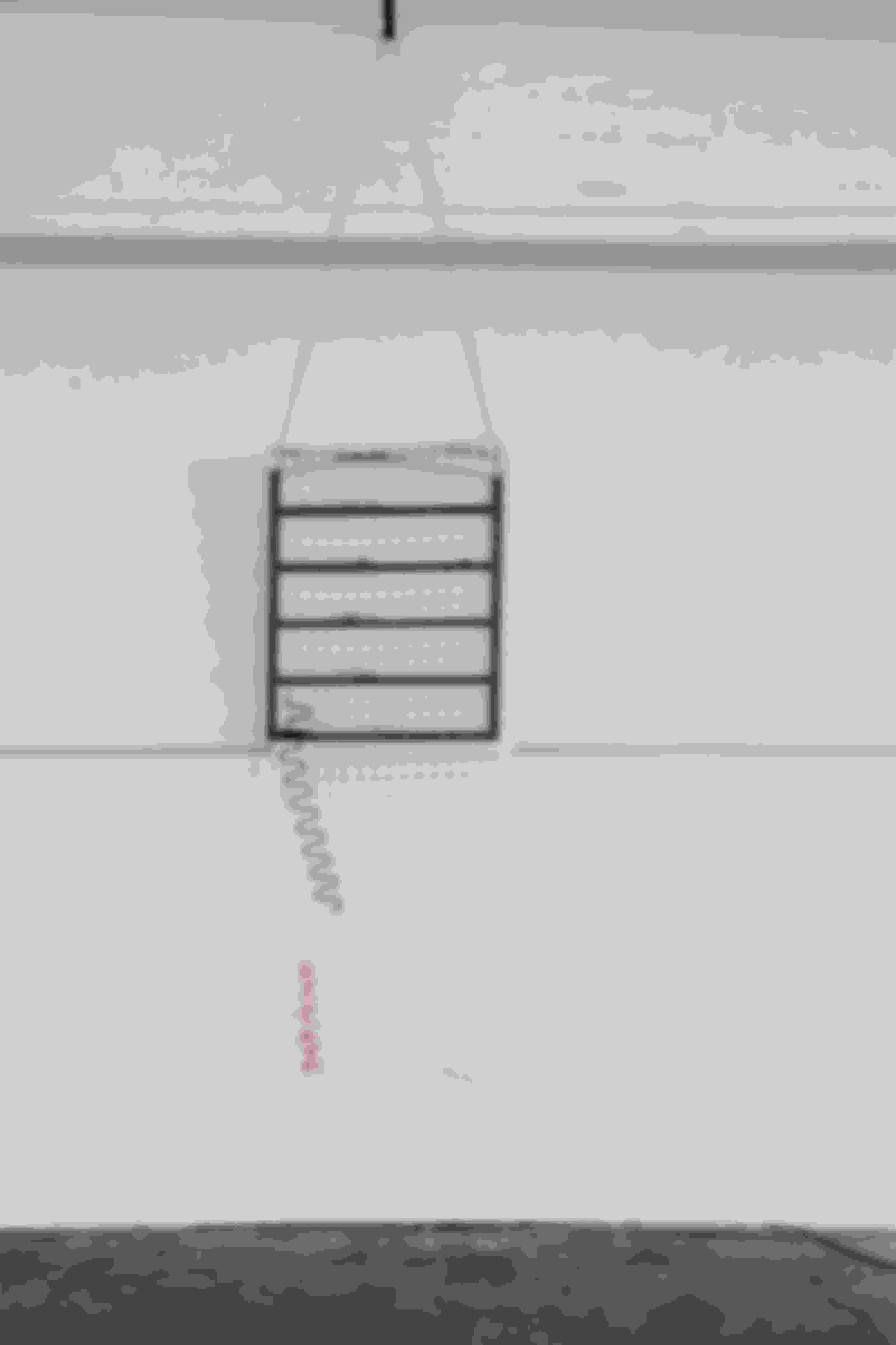


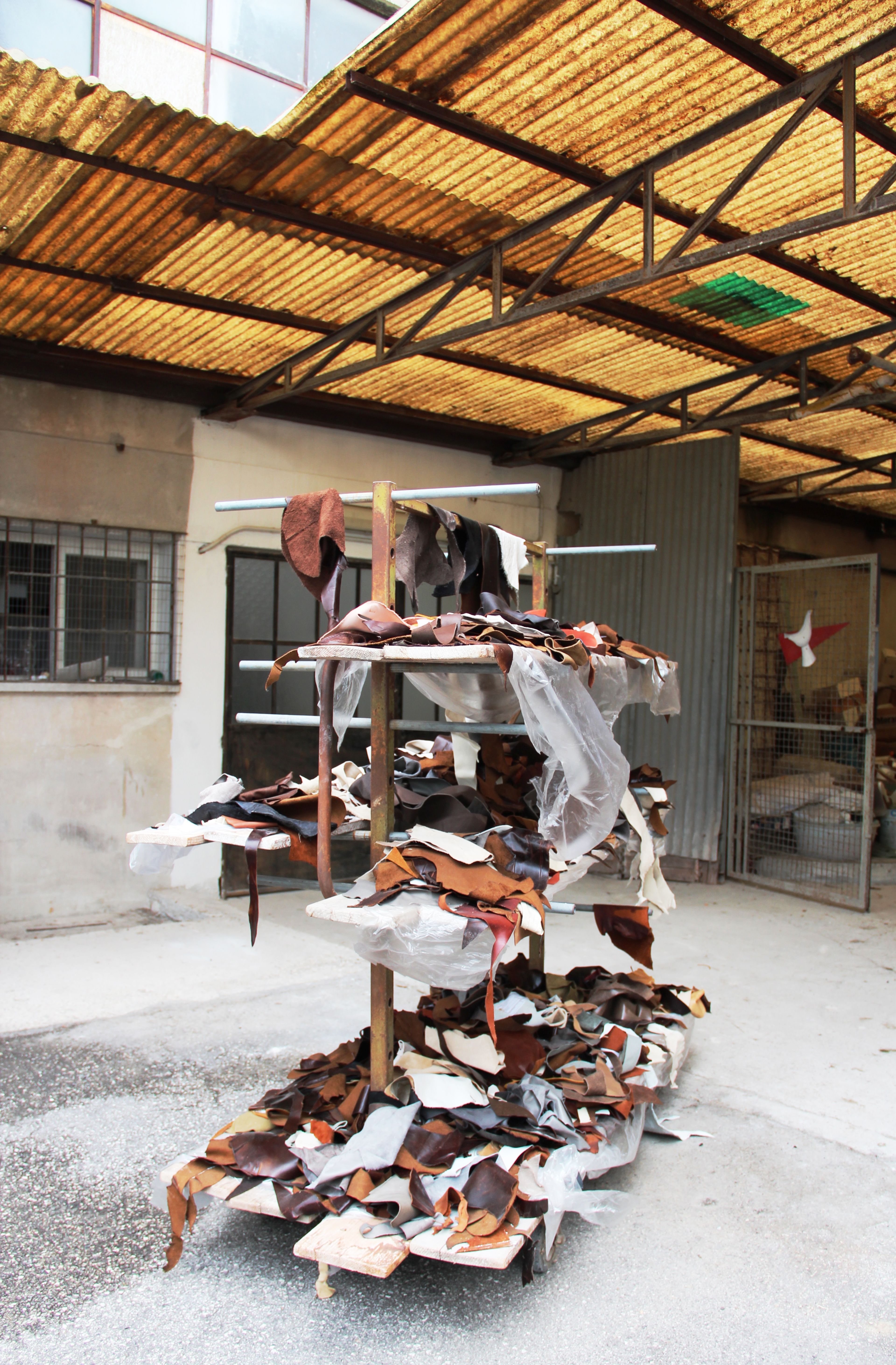
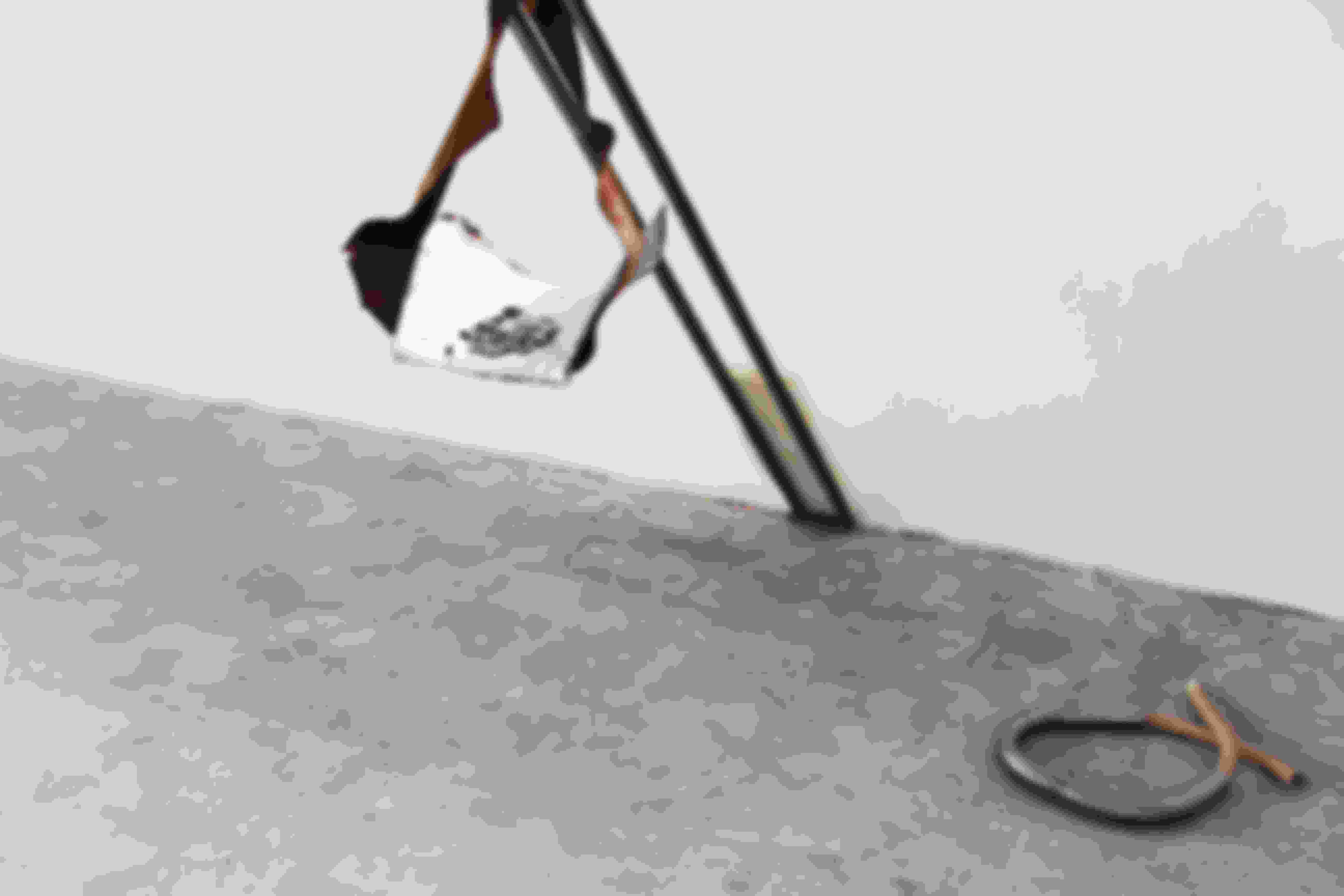
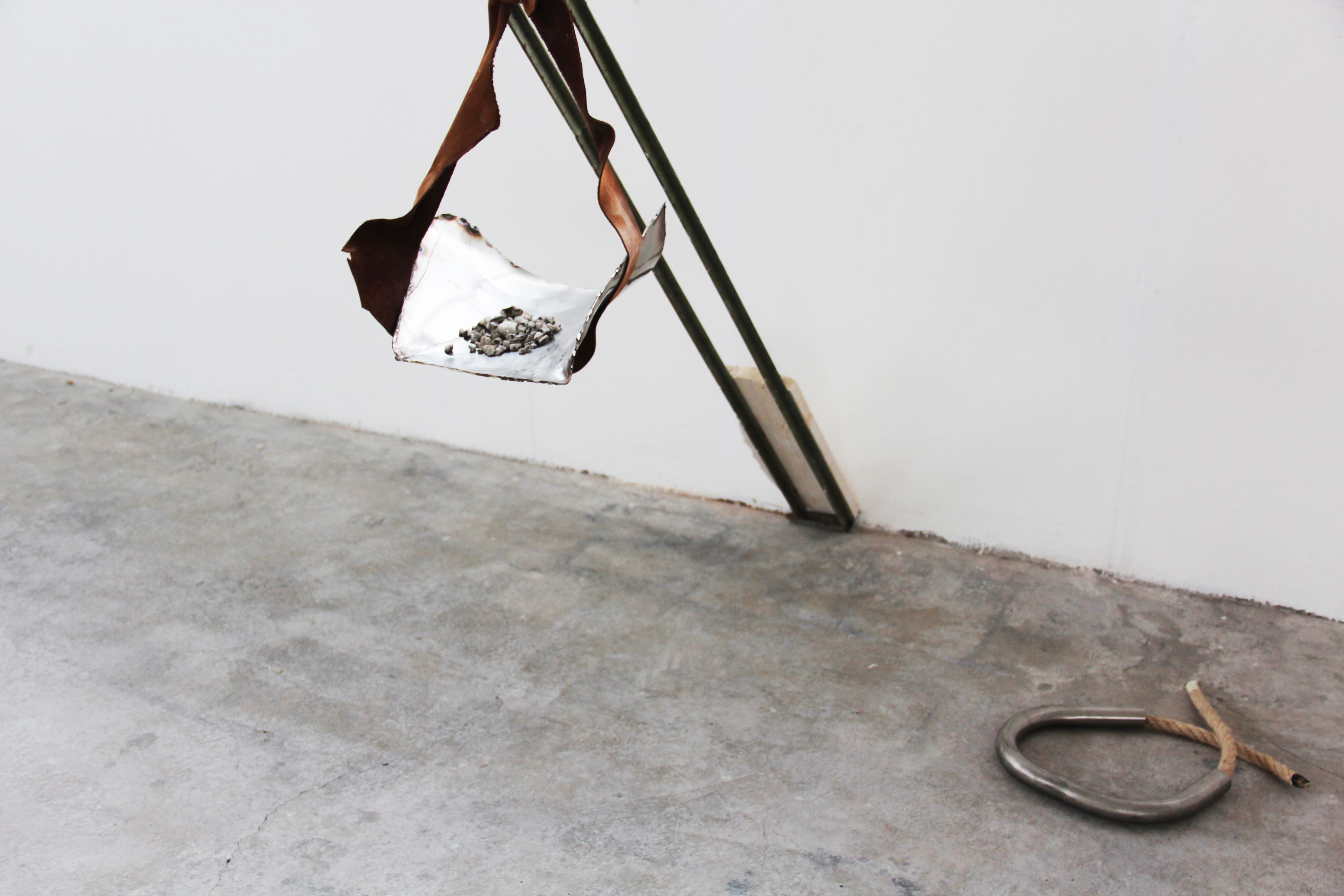




Chapter 2
Thank you Drawings
When I decided to leave New York, I did short travels to Europe to understand where I should live next. I visited Berlin, Paris, London and Milan. Many friends, distant relatives and even strangers were so kind helping me as I moved around with a small suitcase, feeling like not only my body didn’t have a proper home, but also my mind. I wasn’t sure where to go so I just floated around. A stint at a nomadic life; sleeping on couches, in hostels and in Airbnbs. I wanted to give thanks to those people who demonstrated a care towards me during this difficult time - and thus, I created the concept of a thank-you drawing.


The drawings are of passion flowers. The first image of a passion flower that I created is in White Powder, White Stone when I first worked in Nove, Italy. I learned about this flower when I visited my grandmother’s home in Breganze and saw a climbing vine on the outer brick wall, and there laid strange white and purple flowers. “Passiflora” my uncle told me, and so when I got back to the studio I researched more. The native Americans used the Passiflora, or Passion flower as named in English for medicinal and culinary purposes. The Aztecs and the Incas relied on this flower as a sedative to battle insomnia. The flower even became part of a story connecting colonization and the Catholic religion. It was the Conquistadors from Spain who invaded Central and South America who basically re-branded this 1000 plant. They saw the petals and sepals to represent the 10 disciples, the 3 stigma to represent the nails on the cross, the 5 anthers to be the wounds of Christ, and the corona filaments were thought to represent the crown of thorns. The Christian narrative took this plant that has been part of the indigenous cultures and projected their symbology on to it. Such is colonization, and such is something that should be spoken about and understood.
As I traveled to these other countries I read about their histories, the colonizations that occurred, and saw that being born in Canada - a country colonized by both France and Britain - brought an awareness of first peoples around the world. I believe we should have the social responsibility to show gratitude and respect to the cultures and practices of first peoples that have existed for centuries before us and not let their cultures be erased. I believe that by showing this respect and speaking about this issue I help to dismantle ongoing legacies of settler colonialism. These passion flower drawings put into awareness that one can be at home in another country, but should make a point to understand and respect those who came before them.

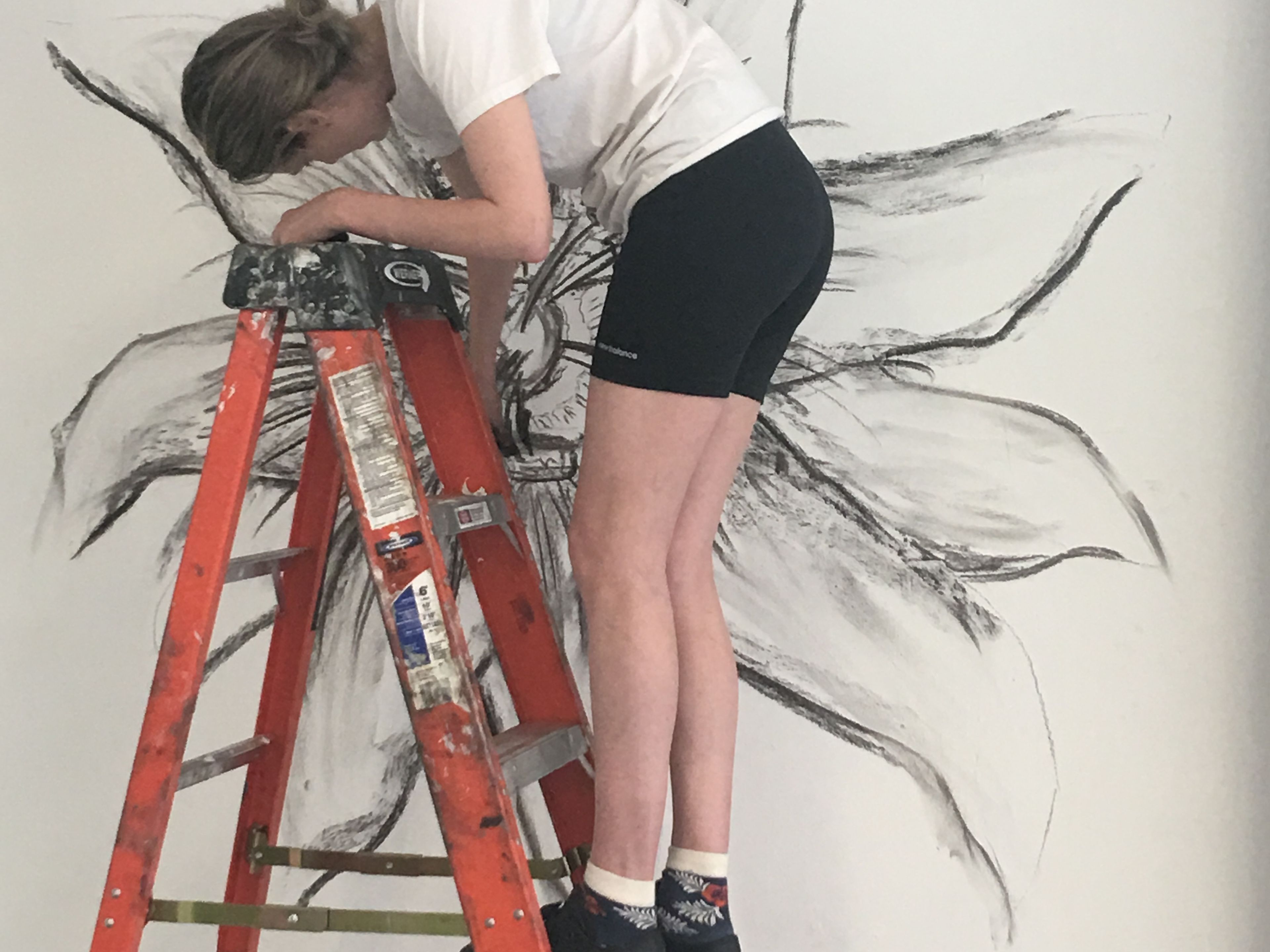

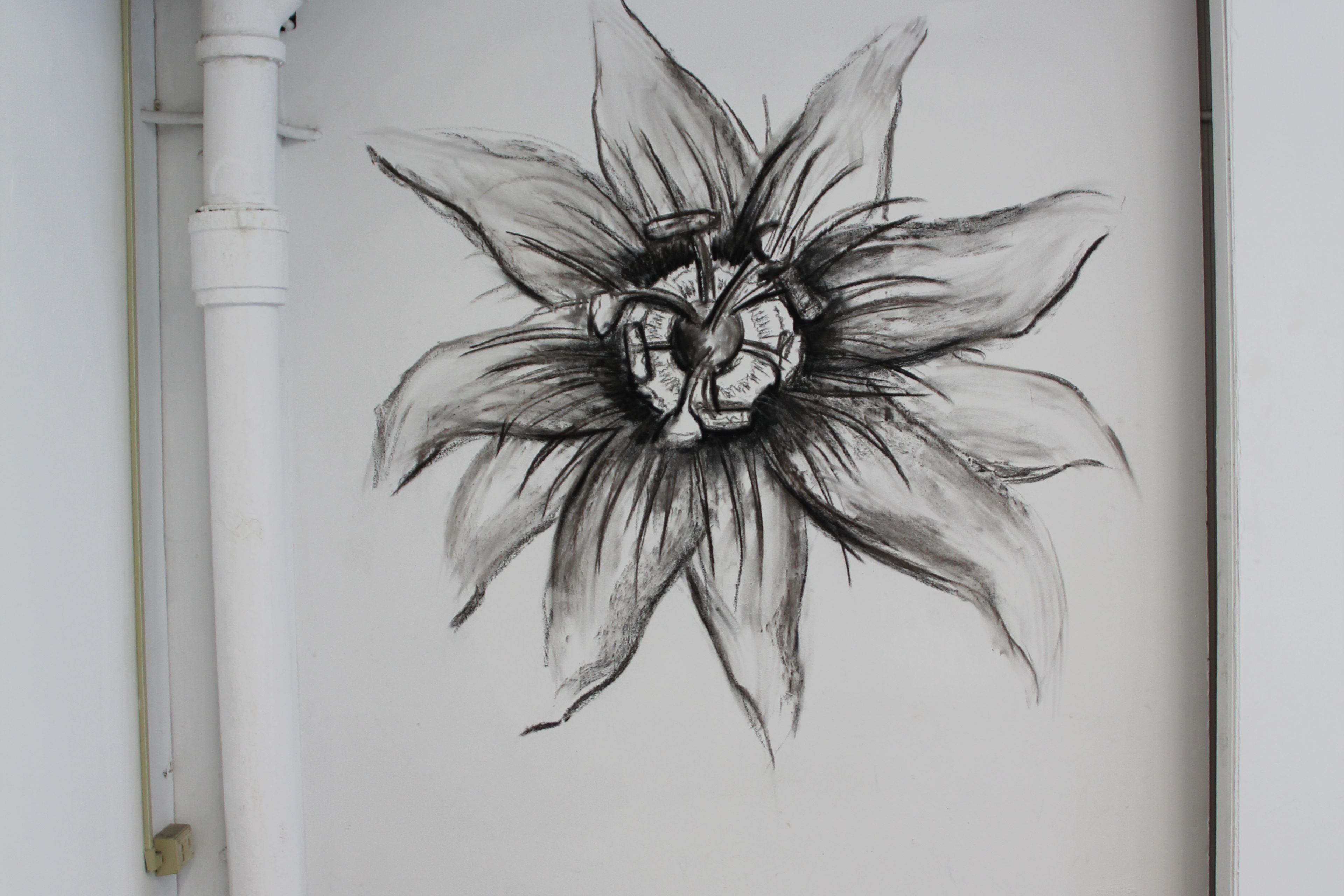
I draw and paint many passion flowers and mail them to those I am grateful to located around the world. During my last year at Columbia University, I painted a large colorful passionflower on navy blue cashmere that I brought back from Italy. On my last day, the day of my graduation I even created a passion flower that existed merely for a few minutes. I spent hours cleaning and repainting the studio space for the new artist to enter that September. Before leaving through the door, I dropped my things, took out a piece of charcoal and sketched a large passion flower on the wall. It was my way of saying thank you to that space that served me during my last year of graduate studies. I stepped back, looked at it for a few minutes, took a few pictures, then reached for pale of white paint, and painted over it and left.